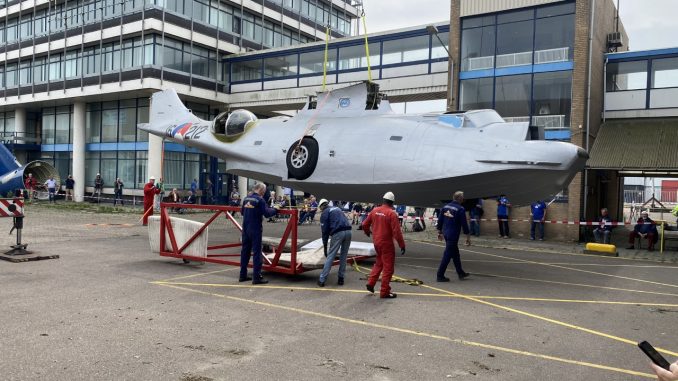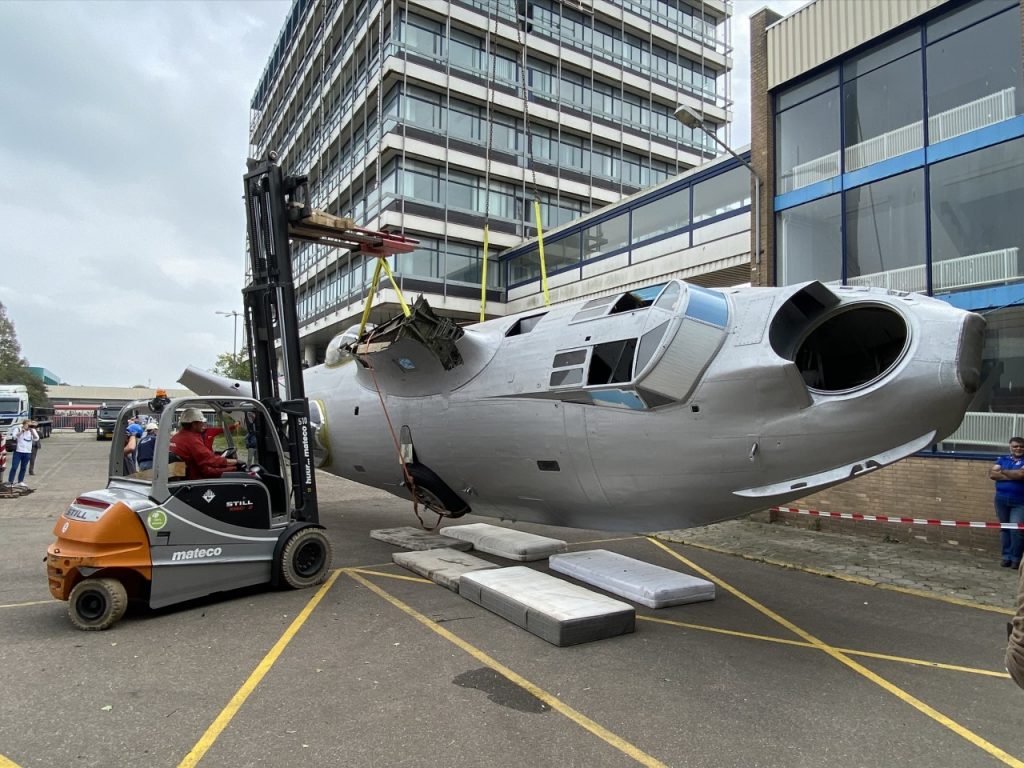
The sole intact Consolidated PBY Catalina to serve with the Dutch Naval Air Force (Marine Luchtvaartdienst, MLD) has just entered restoration at the Nederlands Transport Museum in Nieuw-Vennep, Holland. The MLD had a long association with the remarkable PBY, both in its pure flying boat and amphibian guises, gaining their first operational examples in 1941. Even though their homeland was under German occupation during most of WWII, there were still free-Dutch military units which served within the Allied forces overseas, especially in the Indian and Pacific Oceans. Some of the Dutch Navy units flew Catalinas on anti-submarine and air-search-and-rescue patrols from bases in Australia, Ceylon (now Sri Lanka) and South Africa. Following WWII, the Dutch continued to fly Catalinas in the Netherlands and in their now-former colonies, the Dutch East Indies and Dutch New Guinea (both now provinces within Indonesia). The Netherlands retired their last PBYs in 1957, with all but one of these examples meeting the scrapper’s torch.
The lone survivor is PBY-5A BuNo.48317. She initially served with the US military, but Charles H. Babb & Company of New York acquired her as military surplus in 1951, along with numerous other Catalinas/Cansos. Babb placed her on the U.S. registry as N1495V on January 31, 1951, and sold her, along with seven other PBY-5As (Bu33972, Bu48252, Bu46581, Bu46460, Bu46521, Bu46581 and Bu46583) to the Dutch Navy. They all made the ferry flight to the Netherlands later that year for overhaul at the Dutch aviation maintenance facility, Aviolanda. Following this rework, the MLD officially took Bu48317 on strength as ship 16-212 on February 22, 1952. She joined No.321 Squadron in June, 1952, serving with that unit until late December the following year, when she transferred to No.8 Squadron. The MLD retired ‘212 on July 7th, 1957. Unlike the rest of her brethren, ‘212 survived the mass-scrapping of surplus airframes to go on outdoor display at the water-themed Bosbad amusement park in Hoeven. Here she sat until 1982, when she underwent a period of refurbishment for gate guard duties at the Militaire Luchtvaart Museum, Kamp van Zeist in Soesterberg. But the extended outdoor display took its toll. In 1996, the Stichting Neptune Association started restoring the aircraft in a hangar at Valkenburg Naval Air Base. However, following the closure of Valkenburg, the Catalina went into storage at Soesterberg.

With the public outcry across the Netherlands following the overseas sale of the last flying Catalina in the Netherlands during 2019 (former RCAF Canso A 11022), came the motivation to restore Bu.48317 back to display condition. She made the complicated move by road to the Nederlands Transport Museum in Nieuw-Vennep last summer, where members of the Stichting Neptune Association again picked up the torch to refurbish the tired amphibian back to her former glory. The museum chose this venue for several reasons, but primarily because they had a covered space for the restoration work to continue, and also because most of the restoration team live in the area. Furthermore, the Transport Museum also received a significant donation of spare Catalina parts. However, another major benefit to this location will be that the public will be able to watch the restoration take place, especially on Wednesdays when the Neptune Association volunteers will be most active. The team expects the restoration to take up to five years to complete, after which the restored Catalina will return to the Nationaal Militair Museum in Soesterberg. We look forwards to following this important project as it unfurls!



Be the first to comment
Graphic Design, Branding and Aviation Art